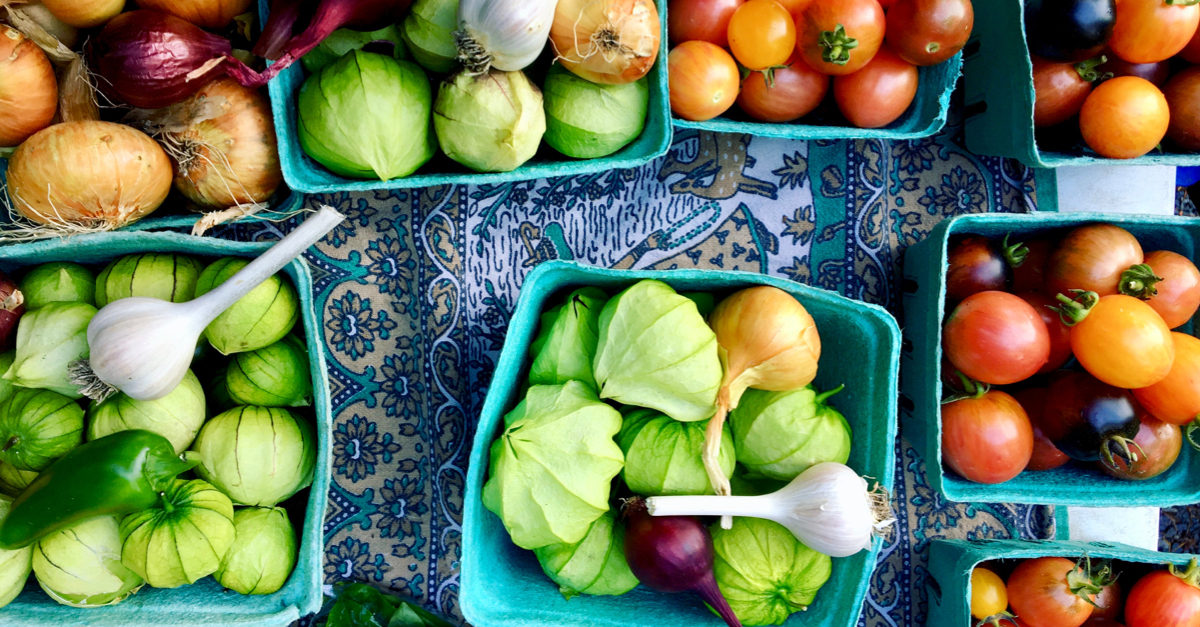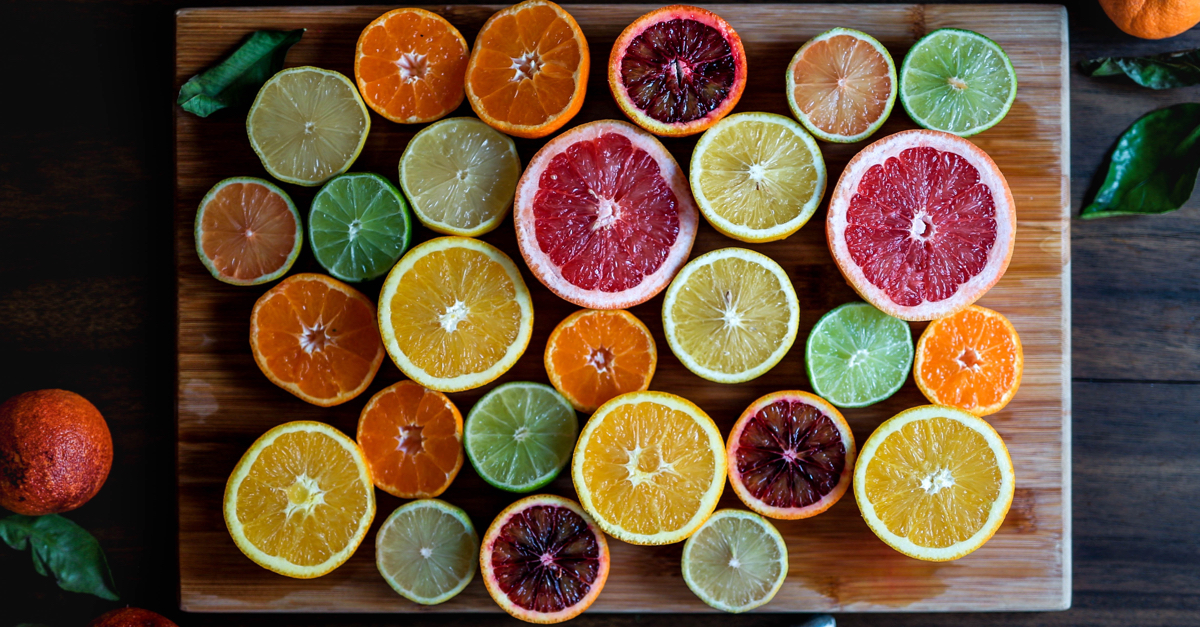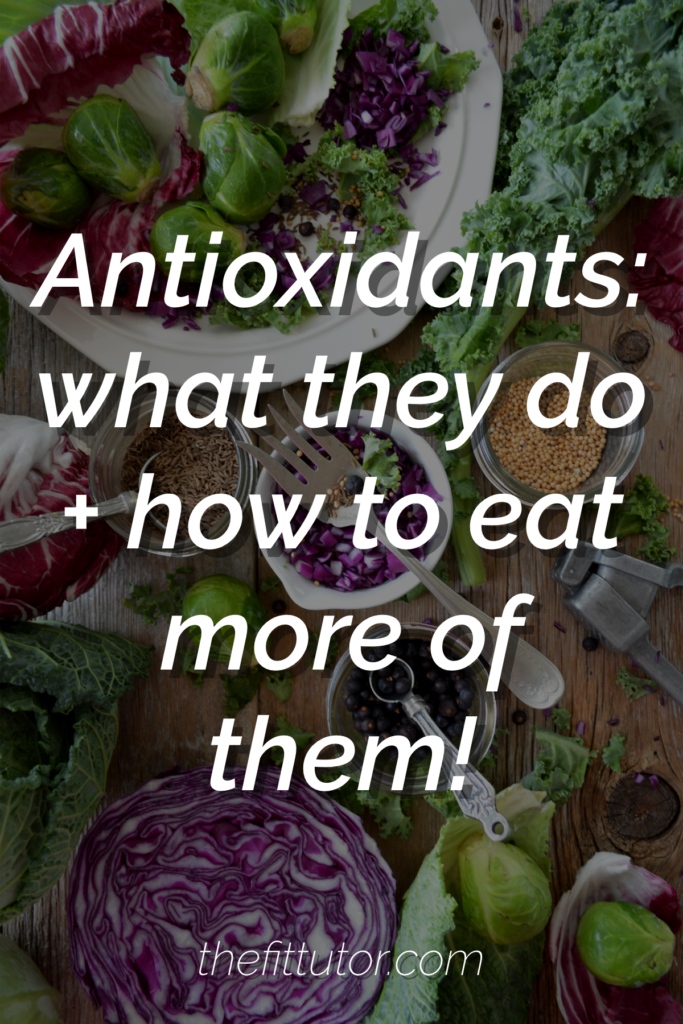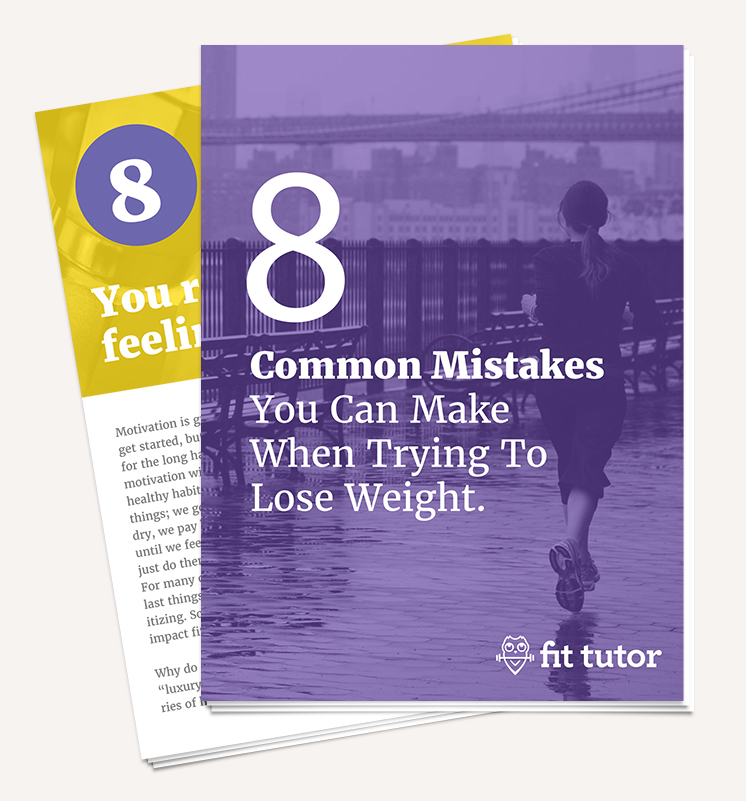Antioxidants are all the rage, right? Everything from foods to supplements to oils to skincare products boast of these wonderful little miracle workers. Confession: for a long time I didn’t really understand them (or their nemesis, the free radicals) but I tried to encounter them as much as possible. I just knew antioxidants: good and free radicals: bad. I know I’m not alone. Consider this your antioxidants for dummies (or for busy people who are tired of health fads) guide.
What Are Antioxidants?
Before we can delve into the magical world of these free-radical fighters, we need to talk about oxidation. Oxidation is the loss of electrons within a cell. The properties of the cell change when electrons are lost. This process causes the creation of free radicals. Free radicals are unstable compounds that can cause damage because they steal electrons from other cells.
Oxidation and free radicals are natural processes that serve a purpose, but if left unchecked they can cause damage, chronic illnesses, tumors, and disease.
Common examples of oxidation are when fruit starts to turn brown after you cut into it, or when something is left out in the rain and starts to rust. It’s a natural process, even your digestion and exercise can cause it. Like stress, it can be good, but if unmanaged it can cause a lot of harm.
Superheroes
So that’s the gist about oxidation and free radicals. Antioxidants come into the picture because, you guessed it, they inhibit oxidation. They donate one of their own electrons to “neutralize” the electron-stealing free radical, making it no longer dangerous. So generous, right?
Antioxidants help us age well, resist disease, and recover properly from a workout. They help keep us healthy and functioning well by protecting our DNA, scavenging free radicals, and improving cancer and disease prognosis.
In busy-people-tired-of-health-fad terms, antioxidants are superheroes that help take away the superpowers of the bad guys. In this case, the bad guys make us look older and can cause disease. Hooray, antioxidants!
So yes, you want them, and they are good! But, how, and is there too much of a good thing?
(spoilers, yes)
How Do I Consume Antioxidants and How Much Should I Have?
Your body has its own antioxidant production system, but consuming antioxidants through your diet can help with the extra wear and tear (pesticides, stress, UV rays, pollution, etc) your body experiences in this day and age.
To keep it simple: eat as many brightly colored plants, vegetables, and fruit that you can! The brighter and more colorful the better!

To be more specific, you want to take in a lot of Vitamins A, C, E, Carotenoids, and Phenols in your diet. It’s best to do this through food instead of supplementation — referring to specific antioxidant supplementation, not your daily multivitamin. Supplementing can actually cause the opposite effect and create more damage, instead of repair. And they cannot compare with the powerful phytonutrient combinations held within a single whole food plant!
Ask your doctor about specific supplementation, especially past a multi. There’s a lot of balancing and ratios to consider, too, so it’s best to get your antioxidants through food unless your doc has a recommendation for you.
Here are some sources for each antioxidant, although this is not an exhaustive list:
Vitamin A
This is a fat-soluble vitamin, meaning it’s best absorbed in your body when consumed with something fatty. Many animal sources contain Vitamin A (retinol), which would already contain fat, so Vitamin A should be easily absorbed. Examples include eggs, salmon, butter, cheese and heavy cream, all from grass-fed cows. Cod Liver Oil is a good source as well.
Good plant and veggie sources include most dark green, yellow, orange, and coral colored plants. Most dark leafy greens (like kale and collards) are good sources, as well as carrots, squashes, and broccoli. Fruits high in Vitamin A include mangoes, watermelon, oranges, apricots, and goji berries. Remember to pair these with a meal that contains some fat, or nuts, seeds, or oil to ensure absorption.
Including these foods in your diet will increase the amount of the antioxidant Vitamin A in your body!
Vitamin C
This vitamin is pretty sensitive to heat, so you’ll get the most Vitamin C out of lightly cooked or raw fruits and veggies. This is a water soluble vitamin, meaning you should drink water with it to improve your body’s absorption.
Good sources of the antioxidant Vitamin C are red and green bell peppers, brussels sprouts, citrus fruits, leafy greens, broccoli, and berries. Yum!
Vitamin E
This is a fat soluble vitamin, so eat sources high in Vitamin E with a meal or something that contains fat. Good sources include nuts, seeds, whole grains, sweet potatoes, avocado, butternut squash, whole grains, wheat germ, leafy greens, beets, pumpkin, peanut butter, and trout.
Carotenoids
These are the pigments that give fruits and vegetables such as carrots, broccoli, sweet potatoes, tomatoes, and kale their vibrant orange, yellow, red and green colors. Besides what’s been listed, good sources include dark leafy greens, goji berries, salmon, squash, guava, and spirulina.
You may have heard of lycopene, beta-carotene, and leutin. These are are specific carotenoids that fight free radical damage.
Phenols
These are phytochemicals that help give plants their color. Some phenols are toxic, but don’t worry, the ones found in plants have antioxidant and cancer-fighting effects! Good sources include: green and black tea, cacao/dark chocolate, red wine, berries, herbs and spices, colorful vegetables, coffee, olives, and extra virgin olive oil.
Don’t worry, there’s a grocery list coming soon!
Important Note
The fresher the produce, the more antioxidants it will have. If fresh veggies aren’t an option, frozen is also a good choice. Lightly cooking or steaming can help retain many of the nutrients if eating raw isn’t an option.
How Much To Eat?
Ideally, you would be eating 8-12 servings of fruits and veggies each day. A serving is one cup of cooked veggies or 2 cups of raw leafies. If that immediately brought stress or your gagging reflex, start where you are and just add some more!
Count up how many servings you have each day, and start by shooting for 1-2 more. You could focus on this habit per meal, like include 1-2 servings at each meal, or starting with lunch and dinner then working your way to breakfast, etc.
A greens smoothie is another good way to get more fruits and veggies in.
Continually challenge yourself and plan meals and snacks around veggies until you’re eating a good amount!

How Do Antioxidants in Plants Help with Workout Recovery?
As we have discussed before, protein is so important! But a diet of only protein and grains (which is basically the typical American diet) creates an acidic state in your bloodstream, which can contribute to both bone and muscle loss. By consuming vegetables, your alkaline load is increased in your blood (and your acidity drops) which helps keep your bones and muscles strong, and helps your muscles rebuild and repair after a workout!
When we exercise, we speed certain processes up, which creates more free radicals. Again, a totally normal process that has benefits! But making sure you’re getting plenty of antioxidants in your diet can help your body recover. You may have heard that supplementing antioxidants post-workout is the way to go, since those free radicals produced are so bad. I wouldn’t suggest this, because they can inhibit a huge, important benefit of post-workout muscle breakdown: improving your body’s response to insulin.
Consuming a diet high in antioxidants via food, not specific supplementation, can help increase muscle mass and help your body repair after a workout.
Wrapping Your Head Around How to Use Anxtioxidants
Instead of running to the store to supplement, or deciding these are the end-all-be-all of health (like some products claim) it’s good to just start by eating more foods that contain these antioxidants. It wouldn’t hurt to start more with the produce sources instead of the butter and heavy cream, especially if you’re consuming more of a “typical” American diet.
Antioxidants are a part of the huge picture when it comes to your health. Consuming more of these good-for-you foods that contain vitamins, minerals, nutrients, and antioxidants will help your body function as it was intended to, fight off disease, and fingers-crossed, help lessen the damage you did while laying out by the pool all of your teenage years.
Start by adding some of these foods to your next grocery list, and keep in mind sometimes we need to eat for our health instead of what just tastes good. I would eat macaroni and cheese with chicken tenders every night if I wasn’t trying to take care of my body (yes, I’m eternally a 7 year old, apparently)!
Add these power foods to your diet and high five your local grocer. I’d love to hear your favorite ways to eat more fruits and veggies in the comments!
And if eating healthy feels overwhelming, consider signing up for the fit tutor and going through our nutrition course with a coach!



Comments are closed.